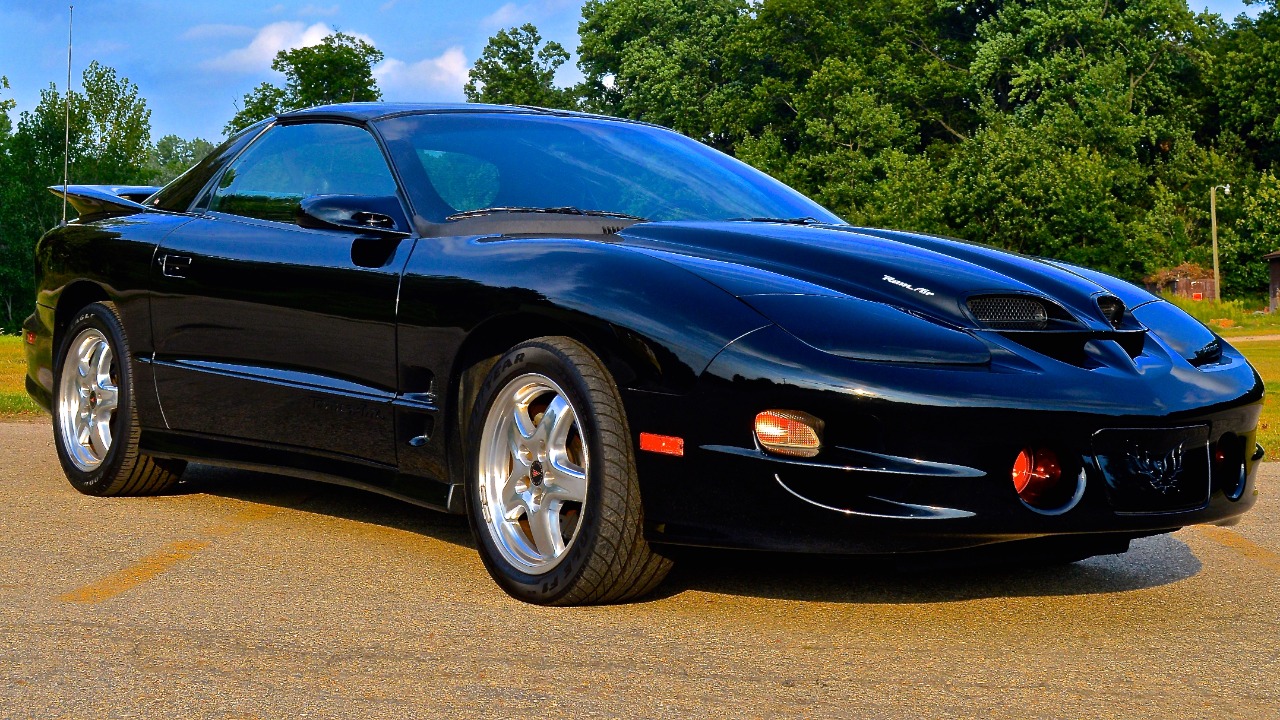
The Pontiac Trans Am WS6, the last of the Firebird lineage, is a muscle car that delivers a performance rivalling that of a Corvette. This final Firebird model, produced until 2002, is a blend of aggressive aesthetics and a high-output LS1 V8 engine. Today, well-maintained examples can be found for under $20,000, making it a compelling bargain in the collector market. Its enduring appeal positions it as a serious value play for muscle car fans seeking Corvette-like thrills without the premium price tag.
Origins of the Firebird Legacy
The Pontiac Firebird made its debut in 1967 as a competitor to Chevrolet’s Camaro. It played a significant role in establishing Pontiac’s muscle car identity through its distinct styling and performance upgrades. The fourth-generation Firebird was introduced in 1993, featuring sleek aerodynamics and shared underpinnings with the Camaro, setting the stage for the Trans Am WS6 variant.
The Firebird’s cultural impact was further amplified by its appearance in media like the TV show “Knight Rider,” which boosted its popularity as a symbol of American automotive muscle.
Introducing the Trans Am WS6 Package
The WS6 performance package debuted in 1996 for the Trans Am. It added Ram Air induction, upgraded suspension, and larger brakes to enhance handling and acceleration. The WS6’s visual cues, including dual hood scoops and 17-inch wheels, differentiated it from base models and appealed to enthusiasts seeking a more aggressive look.
The package was standard on Formula models but optional on Trans Ams, contributing to its status as a sought-after trim in the final Firebird years.
Powertrain and Performance Specs
The WS6 was powered by a 5.7-liter LS1 V8 engine, producing 310 horsepower and 335 lb-ft of torque. With a 0-60 mph time around 5 seconds, it rivaled contemporary sports cars. Transmission options included the Borg-Warner T-56 6-speed manual or 4L60-E automatic, impacting track performance and drivability.
Real-world testing data, such as quarter-mile times in the low 13-second range, underscored the WS6’s capability as a serious performer beyond its pony car roots.
Why the Last Firebird Ended Production
The Firebird was discontinued after the 2002 model year due to declining sales amid rising fuel costs and shifting market preferences toward SUVs. Pontiac faced broader challenges within General Motors, where resource allocation favored other brands, marking 2002 as the end of an era for the division’s performance vehicles.
Production ceased at GM’s Sainte-Thérèse Assembly in Quebec, Canada, leaving the WS6 as the pinnacle of Firebird engineering.
Market Value and Bargain Appeal Today
Current pricing trends for 1998-2002 Trans Am WS6 models show average values ranging from $15,000 to $25,000 depending on condition and mileage, according to recent valuations. Compared to similar-era Corvettes, the Firebird’s lower entry point offers comparable performance for budget-conscious buyers.
Factors influencing value include low-mileage survivors or those with original T-tops, which can appreciate steadily in the collector market.
Restoration and Ownership Considerations
The aging LS1 engine and T56 transmission of the WS6 have common maintenance needs. Fortunately, affordable parts are available due to GM’s shared platforms. Body and interior challenges, like rust in fender flares or fading Firebird emblems, can be addressed with reproduction parts to keep costs down.
Community support through clubs like the Firebird Nationals provides resources for owners to maintain and enjoy these bargains long-term.
The WS6 in Modern Muscle Car Context
The Trans Am WS6 holds its own against newer muscle cars like the Dodge Challenger. Its analog driving experience and lighter weight offer superior agility. It also appeals to Corvette fans as a more accessible alternative with similar V8 rumble and rear-wheel-drive dynamics, as noted by HotCars.
Future collectibility is driven by nostalgia for Pontiac’s demise and the rarity of sub-50,000-mile examples in the current market.
More from MorningOverview